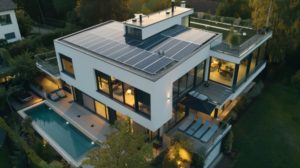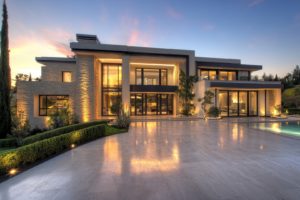
Navigating Architectural Fees: What Every Homeowner Should Know
When embarking on the journey of building or renovating your dream home in Johannesburg’s northern suburbs, understanding architectural fees and processes can often feel like navigating uncharted territory. At CF Architects, we believe that transparency builds trust, which is why we’ve created this comprehensive guide to help homeowners across Sandton, Bryanston, and beyond make informed decisions about their residential projects.

The Value Behind Architectural Services
Many prospective homeowners wonder exactly what they’re paying for when they receive an architectural fee proposal. Architectural fees cover far more than just beautiful drawings – they encompass the entire journey from initial vision to completed home.
The process begins with an in-depth consultation and site assessment, where we evaluate your property’s unique characteristics and discuss your lifestyle needs. This forms the foundation for concept design development, where preliminary sketches bring your vision to life. As your project evolves, we create detailed technical drawings necessary for both municipal approvals and construction implementation.
A significant portion of our work involves preparing comprehensive documentation for council submissions across various Johannesburg municipalities. Each area, from Fourways to Midrand, has specific requirements that need expert navigation. Once approvals are secured, we develop construction documentation that contractors will use to execute your build with precision.
Throughout construction, our team provides regular site inspections to ensure quality workmanship and adherence to design specifications. This continuous oversight protects your investment and ensures the finished home reflects the approved design. The journey culminates in a final inspection and handover, where we verify that every detail meets our exacting standards before you take possession of your new space.
Understanding Fee Structures for Home Projects
Architectural fees in South Africa’s high-end residential market are typically structured in one of three ways, each with distinct advantages depending on your project.
The percentage-based fee is most common for residential projects in Highveld’s affluent neighborhoods, generally ranging from 8-12% of total construction costs. This approach naturally scales with project complexity and scope, aligning the architect’s compensation with the level of detail and time investment required. For a luxury home in Bryanston or a sophisticated renovation in Sandton, this method ensures appropriate resources are dedicated to achieving exceptional results.
Fixed fees provide budget certainty from the outset and are ideal for projects with clearly defined parameters. This structure is often preferred for smaller renovations or projects with limited variables. The clarity this provides can be particularly valuable for homeowners working within strict financial constraints.
For initial consultations or smaller advisory roles, time-based rates reflect the actual hours invested by professionals of varying experience levels. This approach offers flexibility for homeowners who may need specialized architectural input without committing to a full design process.
Regardless of the structure, your proposal from CF Architects will clearly indicate the chosen method and provide a transparent breakdown of anticipated costs, eliminating unwelcome surprises.
Beyond the Base Fee: Additional Considerations
Informed homeowners understand that certain costs fall outside standard architectural fees. These typically include specialist consultants such as structural engineers, whose expertise becomes essential for homes built on Johannesburg’s varying terrain, from the steep slopes of Northcliff to the expansive properties of Fourways.
Council submission fees vary by municipality and are paid directly to local authorities for plan approval and permits. The complexity of your project and its location – whether in established Sandton neighborhoods or developing areas around Midrand – can influence these costs significantly.
Other potential expenses include as-built drawings (documenting any changes made during construction), large-format printing costs for submissions, and travel expenses for projects located beyond the standard service area. Sophisticated visualization tools beyond standard presentation drawings, while not essential, can provide valuable insight into how your completed home will look and feel.
It’s worth noting that significant design changes requested after approval of specific project phases typically incur additional fees, as they require reworking of completed documentation. A comprehensive proposal will include estimates of these potential additional costs to facilitate proper budgeting.
The Payment Journey: Aligning with Project Milestones
To ensure fairness for both homeowners and architects, payment schedules typically align with project milestones. The process usually begins with an initial deposit of 20-30% upon signing the agreement, which activates professional services and secures your place in the studio’s schedule.
As your project progresses through concept design approval, municipal submission, and completion of construction documentation, additional payments (typically 20% each) become due. The remaining percentage is usually distributed throughout the construction period, which can extend from six months for simpler renovations to eighteen months for complex luxury homes in areas like Bryanston or Waterfall.
This staged approach ensures that payments correspond with completed work and significant project progress, providing homeowners with the security of seeing tangible results before making further financial commitments.
Managing Changes: When Vision Evolves
It’s natural for homeowners’ visions to evolve as projects progress. Minor refinements that fall within the normal design development process are typically included in your fee. However, substantial alterations to approved designs or project scope will require fee adjustments, which should always be discussed and agreed upon before proceeding.
Professional architectural practices document all scope changes in writing, clearly outlining associated time and cost implications. They will also advise if changes might affect municipal approvals – particularly important in heritage areas of Johannesburg or properties with special zoning considerations.
Open communication about potential cost implications before undertaking additional work helps maintain trust and prevents financial misunderstandings as your project develops.
Navigating Municipal Approvals: The Architect's Role
One of the most valuable services an experienced Johannesburg architectural firm provides is managing the often complex municipal approval process. This includes preparing all necessary drawings, forms, and supporting documents tailored to specific requirements of different municipalities across the greater Johannesburg area.
Your architect will submit the package to relevant authorities, address technical questions raised by council officials, and actively monitor application progress. If adjustments are needed, they handle revisions and resubmissions, saving homeowners considerable time and frustration.
While approval timelines vary significantly – from four weeks in efficient municipalities to three months in more congested districts – an architect’s thorough understanding of local requirements and established relationships with council departments can help streamline what might otherwise be an overwhelming process.
Protecting Your Investment: Budget Management
Effective budget management is integral to successful residential projects in South Africa’s premium market. The process begins with early construction cost estimates during the concept phase, with designs developed to align with established budget parameters.
As designs become more detailed, cost projections are refined to maintain alignment with financial expectations. Value engineering identifies opportunities to maintain design integrity while managing costs – particularly important given the premium associated with quality construction in areas like Sandton and Bryanston.
During the tender phase, contractor bids are carefully analyzed to ensure they align with budget expectations. Experienced architects recommend including a 10-15% contingency for unexpected costs, particularly important for renovation projects where existing structural conditions may reveal surprises once construction begins.
Finding the Right Team: Contractor Selection
The quality of your contractor significantly impacts your project’s success. Professional architectural practices offer substantial support in this critical selection process, beginning with preparation of comprehensive tender packages that enable accurate bidding.
Many architects maintain relationships with reputable contractors suitable for various project types and can provide recommendations based on your specific needs. They evaluate submissions for completeness, understanding of scope, and reasonableness of pricing, helping you identify red flags that might not be apparent to the untrained eye.
Architects can assist with contractor interviews, helping you prepare questions that reveal capability and compatibility. They also review building contracts to ensure your interests are protected throughout the construction phase. While the final selection remains your decision, this guidance helps identify contractors whose quality standards and expertise align with the sophisticated requirements of premium residential projects in Johannesburg’s northern suburbs.
Construction Phase: Professional Oversight
During construction, architectural oversight provides quality assurance that protects both the integrity of the design and your financial investment. Regular site inspections at critical construction milestones verify that work meets design intent and quality standards expected in premium residential properties.
Architects provide technical clarification when needed and address unforeseen site conditions or construction challenges – particularly valuable in Johannesburg’s variable terrain and climate. They participate in scheduled site meetings with contractors, review progress before recommending staged payments, and conduct thorough final inspections before project handover.
This ongoing professional presence ensures that your vision is faithfully executed, resulting in a home that not only meets but exceeds your expectations.
Understanding Timelines: Planning Your Project
Realistic timeline expectations are essential for a positive building experience. New builds in Johannesburg’s affluent suburbs typically require 6–18 months from concept to completion, depending on complexity and scale. Renovations generally range from 3–12 months, while municipal approvals across various districts take 4–12 weeks, with significant variation between jurisdictions.
The design development phase typically spans 1-3 months, followed by documentation and council approval (2-4 months), contractor selection (2-4 weeks), and construction (3-12 months for most residential projects). A detailed timeline from your architect allows for proper planning, including identification of critical decision points requiring homeowner input to maintain schedule.
Understanding these timeframes helps homeowners plan appropriately, whether coordinating with rental agreements, school terms, or other significant life events.
CF Architects specializes in creating exceptional residential spaces throughout Johannesburg’s premier neighborhoods. With a focus on thoughtful design that elevates everyday living, our team guides homeowners through every step of the architectural journey.
Most Recent Articles

Reimagining Home: The Art and Science of Open Plan Living
In the sun-drenched landscapes of Johannesburg’s northern suburbs, a quiet revolution has been transforming residential architecture for the past decade.

Transform Your Home: Designing Ultimate Outdoor Entertainment Spaces
In Johannesburg’s sun-blessed climate, outdoor living transcends luxury to become an essential component of modern home design. As Highveld homeowners

Designing for Tomorrow: Smart Energy Solutions for South African Homes
In a country where power outages have become part of daily life, creating energy-independent homes isn’t just about sustainability—it’s about

Designing Timeless Modern Family Homes: Creating Enduring Spaces for South African Living
In Johannesburg’s ever-evolving residential landscape, the quest for a home that balances contemporary elegance with lasting appeal presents both challenges
I'd Like More Information
CHOOSE A PLAN THATS RIGHT FOR YOU
Don't miss out on our latest news and offers - subscribe to our newsletter!
No Obligation, Complimentary Meeting.
